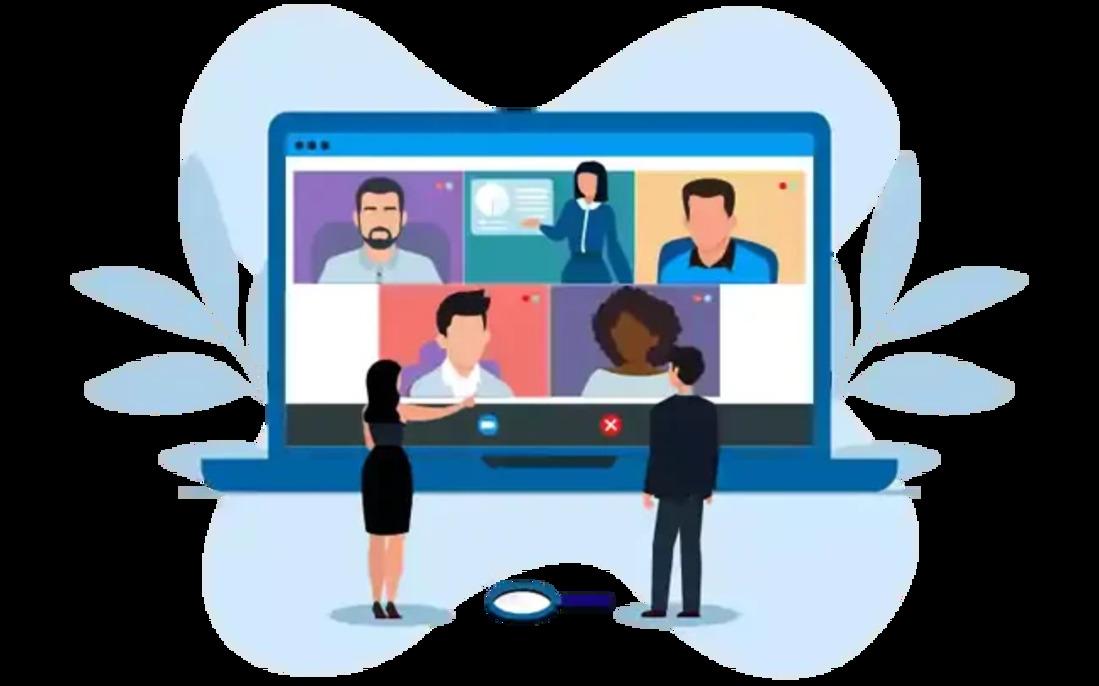The Death of Static Webinars: Why Interactive Is the Future

For more than a decade, webinars have been a staple of digital marketing, training, and thought leadership. They offered businesses a cost-effective way to reach a wide audience, educate prospects, and showcase expertise. But the landscape is changing. Traditional, one-directional “static” webinars — where a presenter speaks over slides while attendees passively watch — are losing their appeal. Audiences today demand more engaging, personalized, and interactive experiences. The future belongs to interactive webinars.
The Problem with Static Webinars
Static webinars once worked because they filled a gap: they replicated the classroom experience for a digital audience. But now, attention spans are shrinking, digital fatigue is rising, and participants expect more value from their time.
Some of the key issues with static webinars include:
- Low engagement: Attendees often multitask, tune out, or drop off halfway through.
- One-way communication: Limited opportunities for Q&A, feedback, or audience participation.
- Poor retention: Without active involvement, participants retain less information and are less likely to take action.
- Generic content: A “one-size-fits-all” format rarely speaks to individual challenges or learning styles.
As a result, static webinars are struggling to keep audiences invested. Businesses that cling to the old model risk seeing diminishing returns on their marketing and training efforts.
The Rise of Interactive Webinars
Interactive webinars turn the script around by placing the audience at the center of the experience. Instead of passively consuming content, participants are actively involved — through polls, live chats, quizzes, breakout rooms, and real-time collaboration tools. This transformation has been fueled by advances in webinar platforms, greater comfort with digital collaboration, and the growing expectation for personalized engagement.
Interactive elements change the game in several ways:
- Higher engagement: Polls, surveys, and chat functions make attendees feel heard and valued.
- Deeper learning: Interactive tools encourage active participation, which improves knowledge retention.
- Stronger connections: Real-time Q&A and breakout sessions foster a sense of community.
- Data-driven insights: Engagement metrics provide valuable feedback for improving future sessions.
Why Interactivity Matters
Audiences in 2025 are overloaded with content — emails, ads, videos, podcasts, and social media posts all competing for attention. Interactivity cuts through the noise by making participants co-creators of the experience.
Consider these benefits:
- Personalization at scale
Interactive webinars allow hosts to tailor content in real time based on audience input. For example, polls can guide presenters to focus on topics attendees care about most. - Trust and authenticity
When participants can ask questions, vote, or contribute opinions, the event feels less like a scripted presentation and more like a genuine conversation. This builds trust and credibility. - Conversion power
Marketing teams have found that interactive webinars generate higher-quality leads. Attendees who engage are more likely to convert into customers compared to those who simply watch passively. - Extended lifecycle
Interactive webinars often produce reusable content. Poll results, Q&A transcripts, and collaborative discussions can be repurposed for blogs, social posts, or follow-up campaigns.
The Future of Webinars
The future of webinars lies in blending interactivity with emerging technologies. AI-powered tools can analyze engagement in real time, suggesting adjustments to keep audiences hooked. Virtual reality (VR) and immersive 3D environments may soon take webinars beyond flat screens into interactive, experiential events. Micro-webinars — short, interactive sessions under 20 minutes — are also gaining traction as a way to deliver focused value without overwhelming audiences.
Forward-thinking organizations are already experimenting with:
- Gamification: Points, badges, or competitions to motivate participation.
- Collaborative whiteboards: Allowing groups to brainstorm live.
- Hybrid formats: Combining live interactivity with on-demand flexibility.
Conclusion
The age of static webinars is coming to an end. Today’s audiences expect experiences that are dynamic, personalized, and engaging. Interactive webinars not only capture attention but also build stronger relationships, improve knowledge retention, and deliver measurable business impact.
In the future, webinars won’t just be about presenting information — they’ll be about creating dialogue, collaboration, and memorable experiences. The shift from static to interactive isn’t just a trend; it’s the evolution of digital engagement.
Read More: https://intentamplify.com/
- Art
- Causes
- Crafts
- Dance
- Drinks
- Film
- Fitness
- Food
- Oyunlar
- Gardening
- Health
- Home
- Literature
- Music
- Networking
- Other
- Party
- Religion
- Shopping
- Sports
- Theater
- Wellness


